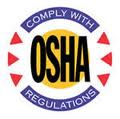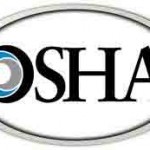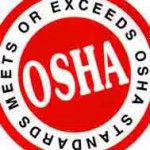Thu 4 Oct 2012
Do we need a hearing conservation program?
Posted by admin under ACGIH, Exposure, Hazard Communication, Hearing Conservation, hearing protection, Management, PEL (Perm Exp Limit), Personal Protective Equip (PPE), Safety Policies, Safety Programs, Training, TWA
Comments Off on Do we need a hearing conservation program?
Yes. If you are in construction, I recommend it. Here’s why:
First, the rules. OSHA does NOT have a specific construction standard for hearing conservation. Why does this matter? Well, the current OSHA rules state that if you have 1 day (that’s only one day) of average noise level above an average of 85 decibels A-weighted (dBA),  called the Action Limit, you are required to start a program. Obviously noise levels vary on construction jobsites. I’d guess that most projects have at least one day of levels above 85dBA’s.
called the Action Limit, you are required to start a program. Obviously noise levels vary on construction jobsites. I’d guess that most projects have at least one day of levels above 85dBA’s.
And, these particular OSHA rules are terrible. Well, they are terrible if you care about your hearing. (see my earlier post). The rules are simply not protective enough. If you are exposed to noise for 8-hours a day at 90 dBA (the OSHA average exposure limit) you WILL have hearing loss (this is without hearing protection). Does that seem like a very protective rule? Â I’ve heard talk about them changing it, but…I doubt it will ever happen.
Second, let’s consider cost vs. reward. To start a hearing conservation program you must measure your employees hearing , called audiometric testing (and do a few other things). It costs approximately $20/employee to do this per year. Compare this with the average claim (of hearing loss) cost of around $20,000. So, if you have 20 employees, and it costs you $400/year…it takes about 50 years to pay yourself back for NOT starting a program. ($20,000/400= 50 years)
Third, consider your employees. Having their hearing checked may seem like a hassle and a worthless exercise, but, some will appreciate it. I’ve found that employees like to know how they are hearing. It’s good if your employer cares how well you hear. It’s also a yearly reminder in hazard awareness to noise.
Because in construction, we know there’s noise!
If you’re dead-set on NOT having a program, you’ll need documented noise dosimetry for each employee, job task, and possible overexposure above 85 dBAs. It is possible  for a construction company to avoid having a program, but you have the burden to prove there isn’t noise. Call your favorite industrial hygienist for help.




